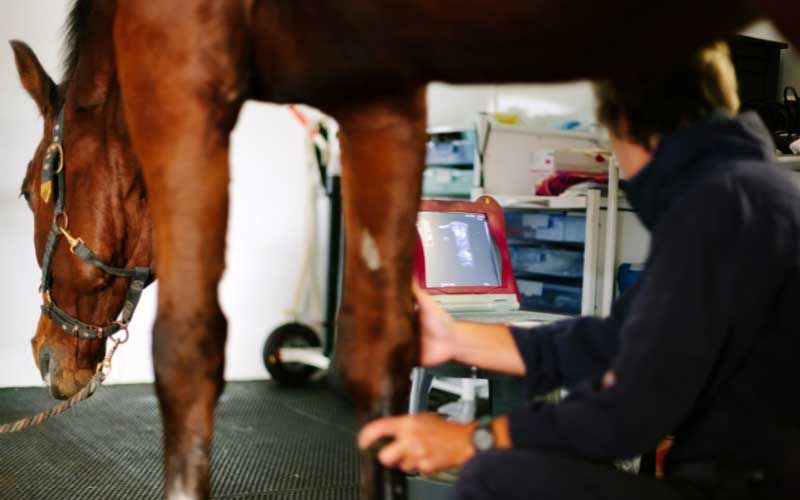Diagnostic Imaging
Diagnostic Imaging
Digital X-Ray and Diagnostic Ultrasound
At High Caliber Performance, we provide the best possible care for your horses. We believe that staying at the forefront of technology is crucial to ensure the health of your performance horse. Digital X-ray and diagnostic imaging have become indispensable tools for diagnosing sport horse injuries and managing our equine athletes.

We Offer Digital Radiographs for a Variety of Reasons
-
Lameness Exams: An X-ray is often required to investigate lameness issues in horses. Lameness refers to an abnormality of a horse’s stance or gait due to a variety of issues. Digital radiographs provide detailed images of the horse’s bones, joints, and soft tissue structures, allowing us to detect fractures, arthritis, bone chips, OCDs, or other musculoskeletal conditions that may be causing lameness. Ultrasounds may also be indicated to provide a comprehensive diagnosis, especially if the injury is in the horse’s soft tissue.
-
Dentistry Exams: X-rays play a crucial role in the dental treatment of horses. X-rays can detect dental issues such as tooth root infections, dental fractures, fractures of the jaw, and abnormalities below the gum line, which are not visible during routine dental exams.
-
Hoof Structure and Balance Exams: X-rays are valuable in cases where a horse is experiencing pain or abnormal hoof growth and wear. Radiographs also provide your farrier incite for accurate trimming and shoeing. The images provide the angles the horse requires to keep him at peak performance and soundness. We would be glad to arrange an appointment with you and your farrier to obtain x-rays 7-10 days after your farrier has shod your horse. Other common ailments we use x-rays for include navicular syndrome, laminitis or founder, ringbone, and white line disease.
-
Pre-Purchase Exams: When planning to buy a horse, we recommend you have comprehensive X-rays performed. Radiographs provide buyers with a more complete picture of the horse’s bone structure. Common areas include the feet, hocks, stifles, and fetlocks, but other areas may be recommended based on evaluation. The digital images help prospective owners make informed decisions about their purchase by revealing potential underlying issues affecting the horse’s future performance and soundness.
Diagnostic Ultrasound Can Assist with the Following Services
-
Lameness Exam: Ultrasound is valuable for evaluating soft tissue structures such as tendons or ligaments. Diagnostic ultrasound enables us to visualize and assess the integrity of these structures, aiding in diagnosing injuries that may contribute to lameness.
-
Colic/Abdominal Exams: Ultrasound is a common practice for detecting what could be causing your horse’s colic. This technique provides images of common abnormalities in a horse’s small and large intestines, and peritoneal cavity. It can also detect more severe abnormalities like masses and thoracic lesions. These issues could be causing your horse severe abdominal discomfort and need to be diagnosed and treated promptly. Without an ultrasound, it would be difficult to discern the root cause of your horse’s colic and to determine how to treat it. Fortunately, over 80% of colic types respond well without invasive treatments.
High Caliber Performance Offers Digital Diagnostic Imaging
Digital radiographs and diagnostic ultrasound have revolutionized equine veterinary care. These tools provide detailed and non-invasive insights into your horse’s health, making them indispensable for accurate diagnoses. We are pleased to offer this level of care to your equine athletes.